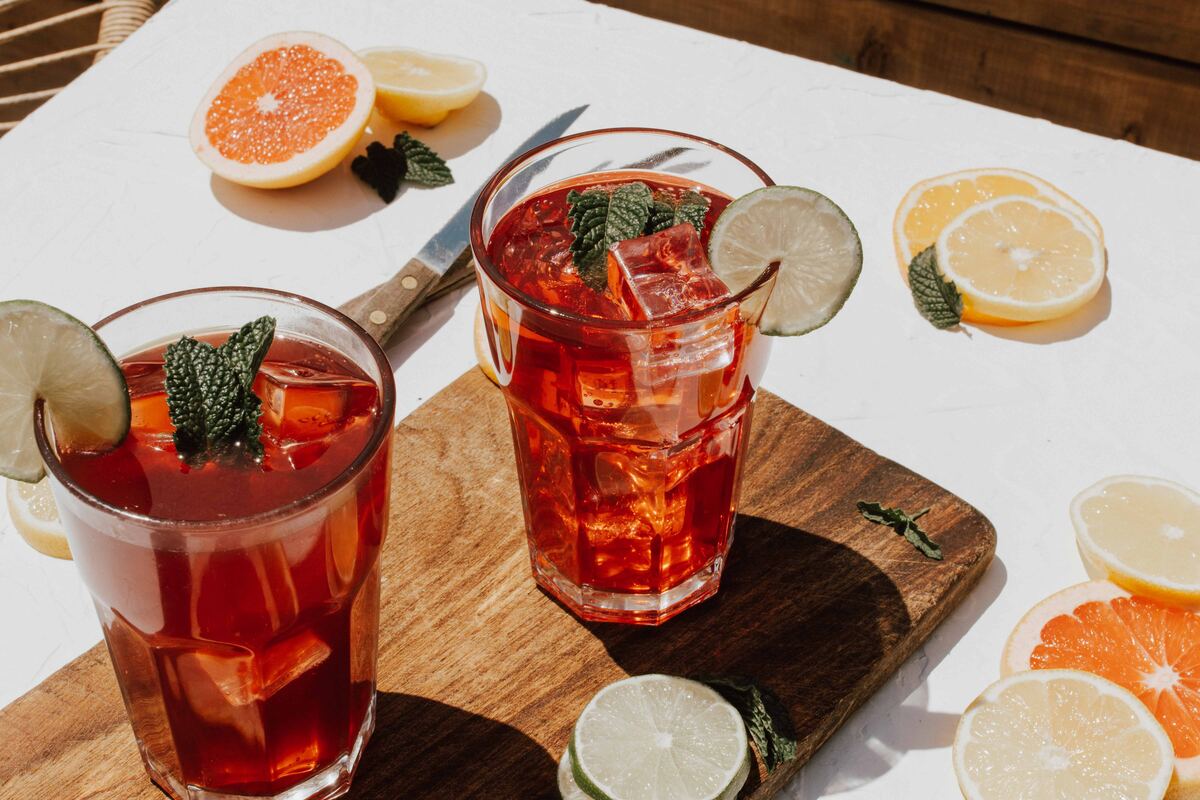Kombucha is a unique fermented tea drink that has been enjoyed for over 2,000 years. Yet, recently, Kombucha beverages seem to be popping up everywhere at local grocery stores and markets. The complex flavor profile of kombucha is a mix of slightly tart, slightly sweet, and fizzy — offering a taste that must be acquired over time. There are many reasons people begin to drink kombucha, most often to benefit from the effects of the tea undergoing fermentation.
But if you’re new to the world of kombucha, you might wonder when the best time to drink it is. Should kombucha be consumed on its own or with a meal? What is the best time to drink kombucha? We know you have all the questions, and we’ve got the answers. Below, we’ll guide you in timing your Kombucha beverages to achieve the best benefits.
What is the best time to drink kombucha?

Kombucha can be enjoyed at any time of the day, but you may wish to change your timing based on what you’re using it for. Kombucha can be enjoyed alone or with a meal — there is no right or wrong answer. If you’re new to drinking kombucha, we recommend starting slowly and allowing your body to adjust to the fizziness of this fermented drink.
If too much kombucha is consumed in a day or you drink too much at once, you may be left with some side effects. If you experience stomach upset or other GI symptoms like gas or nausea, it’s a sign you may need to ease into your Kombucha drinking. The best time of the day to consume kombucha is the time that makes you feel the best.
Consuming kombucha in the morning
Kombucha can be a healthy alternative to coffee as your go-to morning drink. Because kombucha is made from tea, there is a small amount of naturally occurring caffeine in each cup. During the fermentation process, the tea will lose a good amount of caffeine (usually about one-third), leaving the end-product Kombucha drink with just enough to give you a morning energy boost without the crash. On average, an eight-ounce serving of kombucha contains about 6 to 15 mg of caffeine, compared to about 80 to 95 mg in a cup of coffee.
Consuming kombucha in the morning is also a great way to support your gut health while your stomach is empty. Kombucha contains healthy “good” bacteria that help improve your gut function. The emptiness of your stomach allows living cultures in the drink to pass through the stomach faster, reaching the large intestines to work their magic. If you are new to consuming kombucha, start slowly when consuming it on an empty stomach (maybe just start with a few ounces at once instead of a full serving).
Consuming kombucha in the evening

There’s nothing wrong with consuming kombucha in the evening. However, some people find that it may cause sleep disruptions. If you have difficulty sleeping or are extra sensitive to caffeine, it’s best to stop drinking kombucha in the afternoon hours. The fermentation process used when making kombucha also leaves it with a very small amount of alcohol, which could affect sleep quality, especially for ultra-sensitive people. Over time, as your body adapts to consuming kombucha regularly, you’ll learn how your body feels best and be able to adjust the timing of your consumption accordingly.
It’s also important to pay attention to the label of your Kombucha drink if opting for a store-bought variety instead of making your own. Kombucha naturally contains sugar, but many brands add extra sugar to make the drink more palatable. Not only could drinking this extra sugar lead to excess calories and weight gain, but consuming too much sugar before bed could also interfere with sleep quality. Drinking sugar before bed may cause restlessness. Making your own kombucha at home is a great option if you wish to cut back on how much sugar you’re drinking.
How long after drinking kombucha should I eat?

For best digestion results, you may find it helpful to consume Kombucha 30 to 45 minutes before or after a meal so that the food does not interfere with the absorption of healthy bacteria. If your primary reason for consuming kombucha is to improve your digestion and gut health, experts recommend consuming four ounces one to three times a day.
Some people also find that drinking kombucha before a meal helps reduce appetite and prevents overeating. In addition, the probiotics found in kombucha will help make your meal easier to digest and ensure you get the maximum nutrients from the food you consume.





